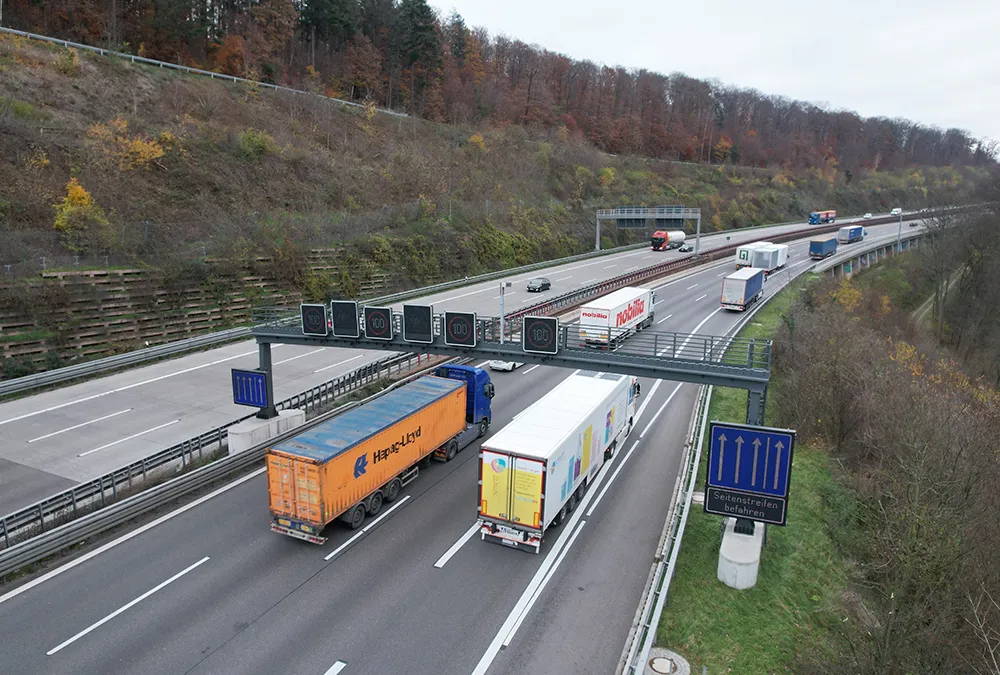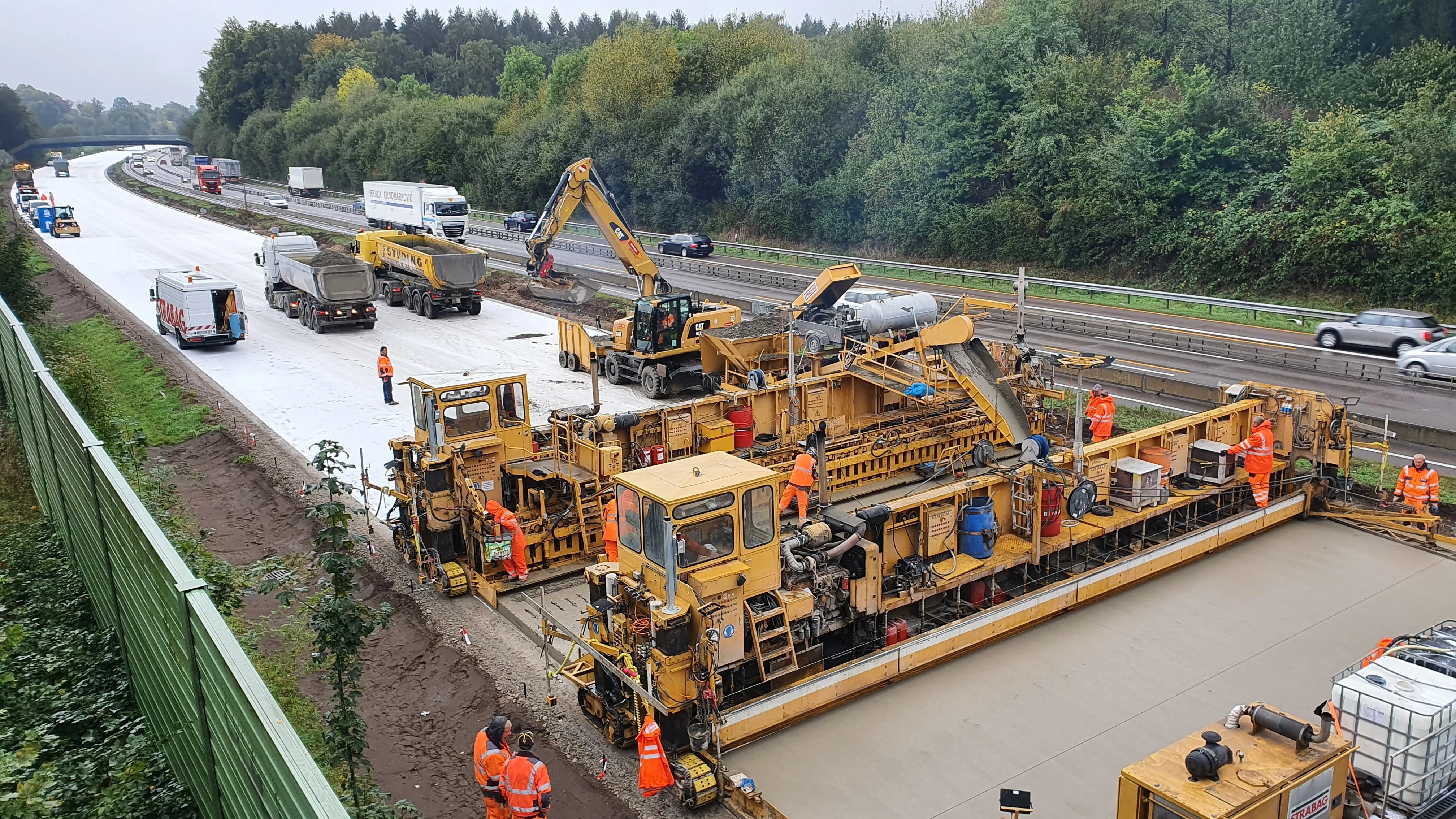
The A8 motorway is an important central east-west link in the European transport network. The section between Karlsruhe motorway interchange and Karlsbad junction features a winding route and gradients of around 7.5% and is highly congested with
about 110,000 vehicles per day. Traffic flow is often blocked in this section due to slow-moving trucks and there are frequent overtaking manoeuvres and lane changes taking place.
SWARCO’s system spans 2.8km along the motorway between Karlsruhe and Karlsbad. It consists of four display cross-sections with LED variable message signs (VMS), eight pole installations for VMS or camera technology as well as 12 route stations. In addition to the outdoor equipment, SWARCO also provides central control software.
The camera technology is from Fuunkwerke video systeme while the operation of all functions is managed by the Autobahn GmbH traffic control centre in Stuttgart. Before the hard shoulder lane becomes a live-lane, it must be checked by the traffic control centre to ensure that no obstacles are blocking the lane.
SWARCO says that the system offers a climate- and resource-friendly possibility for using existing infrastructure more effectively without the need for costly and more permanent expansion of that infrastructure. In fact, notes SWARCO, the capacity of the infrastructure can increase up to 30% with such a system. The first live-lane running took place in early December 2022.








